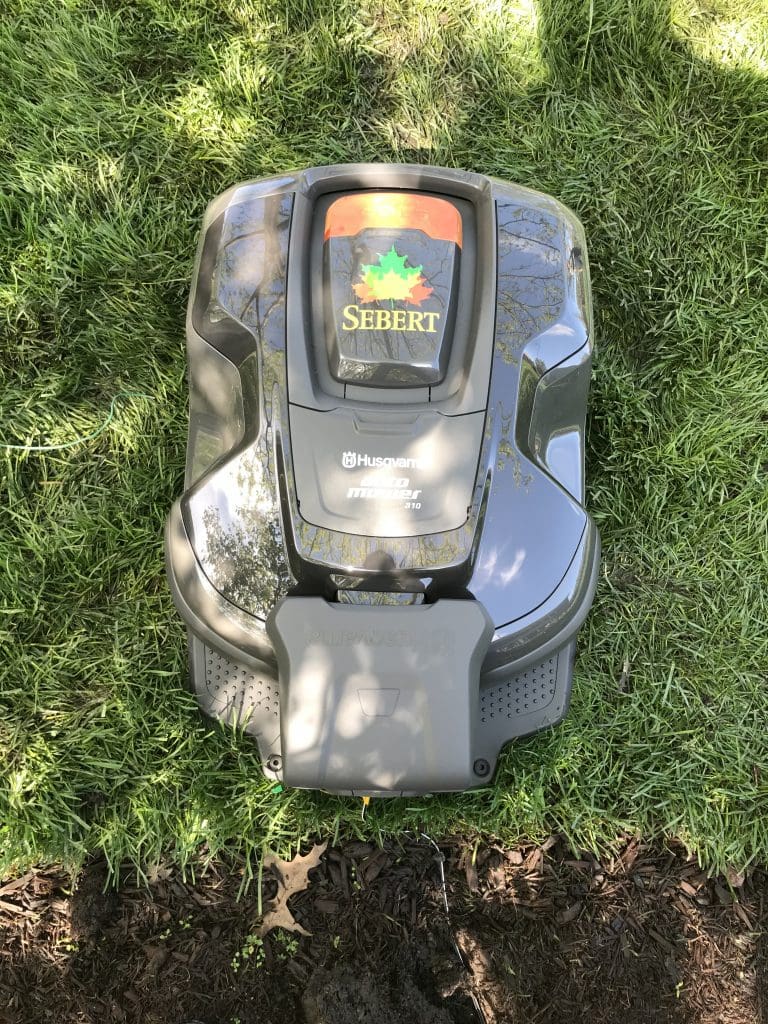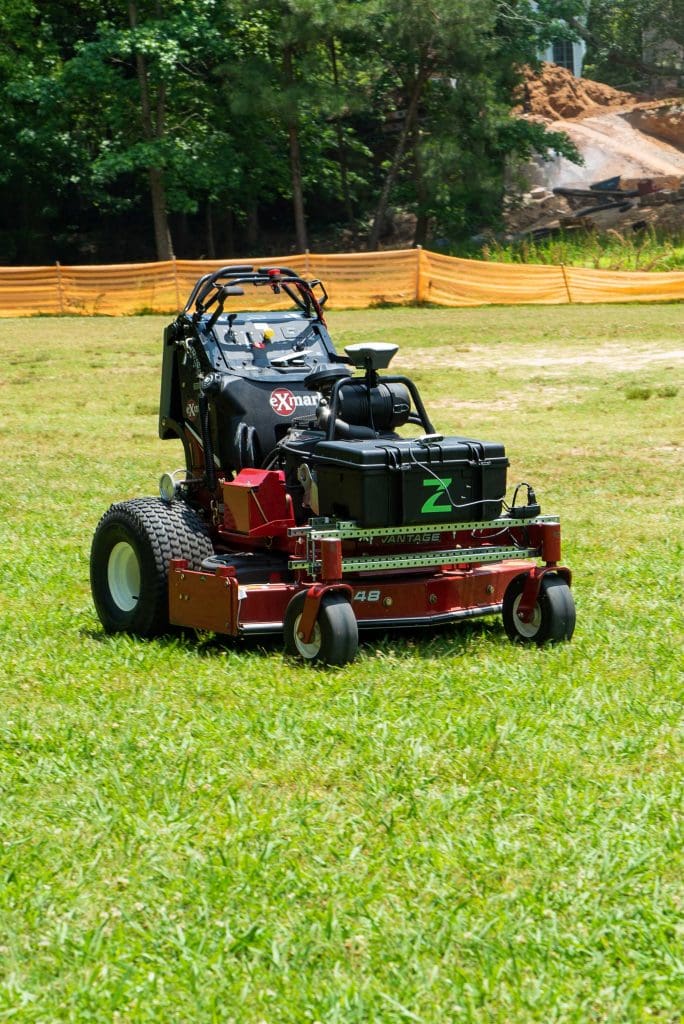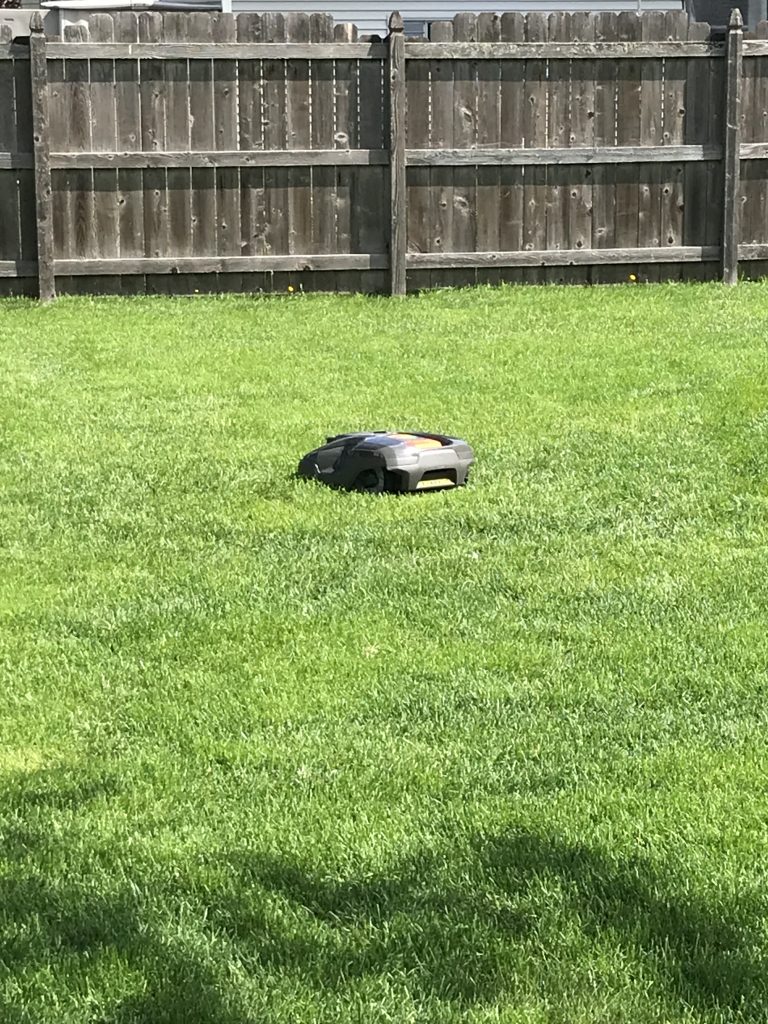
When robotic mowers were first presented to the market, many landscapers couldn’t imagine they would be playing a major role in their business, but as years have passed more landscape maintenance and lawn care companies are adopting the autonomous mowers.
Some have added this new tool in the toolbox due to the ongoing labor shortage. Others gave robotic mowers a try so they could stay on the cutting edge of innovation.
Teddy Russell, CEO of Russell Landscape Group, based in Sugar Hill, Georgia, says he first tested out a robotic mower in 2010. He says a company in France invited him to their office where he was able to watch the mowers at work. They then installed one at the front of their office.
“Russell Landscape has always embraced technology and change,” Russell says. “We want to be a leader in the industry and are open to any ideas that help us continue to improve.”
Russell say they have tested Greenzie technology with Exmark and Green Machine mowers and Husqvarna’s Automower.
Jeff Sebert, president and founder of Sebert Landscape, based in Bartlett, Illinois, says his company began trying out robotic mowers around five years ago. His company has also been testing Husqvarna’s Automower brand.
“I think the future is going to be based around robotic mowers for our industry due to all the issues we have with labor,” Sebert says. Sebert says robotic mowers also fit their culture of being green and reducing their carbon emissions.
Todd Vena, maintenance operations director for Mariani Landscape, based in Lake Bluff, Illinois, says they started using robotic mowers in the spring/summer of 2018. This was in response to continuing labor constraints as well as a desire to stay up to date on the latest technology trends in the industry.
Mariani has tested out robotic mowers from STIHL, Husqvarna, ECHO and Ambrosio.
Changing Opinions

Photo: Sebert Landscape
Over the past 10 years, Russell says he’s seen improvements with the technology.
“I can now see the light at the end of this long tunnel!” Russell says. “The GPS and more precise data with advanced technology is showing that this will be a viable tool for contractors and consumers to use.”
Vena says starting out they were excited to see how the autonomous mowers would perform.
“Now we have learned a lot but still have much to learn,” Vena says. “Every site presents new and different challenges. Our opinion is still we are excited to see how they change the market.”
Sebert says they are still waiting to see a robotic mower that could be easily utilized from a commercial level on a day to day basis.
“That is the current issue,” he says. “There’s nothing really out there as of yet that will take us into the commercial market and help us maintain these properties.”
Current Business Models
Mariani has installed 50 robotic mowers on customer properties and Vena says the number is climbing.
“We charge for it through our weekly maintenance services,” Vena says. “We try to find sites within our existing client base that are best suited for robotic mowers and then we get the client’s approval.”

Photo:
Russell Landscape Group
Vena says the installation fee is recouped through their maintenance service programs. He says the customer response has been very positive, but with a learning curve.
“Standard maintenance on the machines is every two to three weeks depending on turf growth,” Vena says. “For errors and troubleshooting, that is a daily responsibility depending on the amount of errors.”
Due to the batteries, the robotic mowers are collected and stored inside during the winter.
Sebert says they have installed robotic mowers on smaller residential properties. There is a flat fee for the installation and a monthly maintenance fee. However, the resident can decide to purchase the robotic mower and take care of it on their own.
“Typically, if we’re providing other services to that property we are checking at that point in time, but at least monthly, we’re taking a check,” Sebert says. “Most of this information is downloaded on to your cell phone so you have an app that you can rely upon to give you information on whether you’re having operational issues on that piece of equipment.”
If customers have a maintenance agreement, then Sebert will pick up the mower at the end of the season and store it for the client.
“From the customer’s perspective, there’s a lot of interested people,” Sebert says. “I think they embrace it. They love the idea. You will see people pulling off to the side of the road and taking pictures or videos of one of the Automowers as they’re working on somebody’s property.”
Russell has been utilizing the Greenzie technology on three commercial accounts and has a Husqvarna robotic mower at his house. They haven’t charged for the robotic mowing as a service yet. With the Greenzie technology, it uses a computer attached to a commercial mower that runs the machine, eliminating the need for guidewires.
“In the commercial market we are still testing this technology,” Russell says. “However, it allows a trained employee to get off the mower and provide leadership to the crew and focus on the detail and gardening services.”
Benefits of Robotic Mowers

Now that crews are freed up from mowing, Sebert says there’s more focus on bed care, taking care of shrubbery and perennials and trimming the edges along the sidewalks.
Vena says robotic mowers have allowed the company to reallocate resources for gardening, horticultural details, and enhancements, as well as have some capacity for new work. Sebert adds that using robotic mowers is also safer since they cannot throw a rock or anything else that would be a potential hazard.
While Russell Landscape Group hasn’t implemented their robotic mowers full scale, Russell says the Greenzie technology has been able to help offset some of the manpower needs.
“Skilled labor is a challenge,” Russell says. “Typically, the person operating a large commercial mower has to be trained with a lot of experience. This will allow the company to utilize these skilled employees in a more productive way.”
Drawbacks of Robotic Mowers

Vena says the main cons for using robotic mowers have been irregular connectivity issues and error notifications that make it difficult to plan and schedule work for the technicians handling troubleshooting on a daily basis.
Sebert says the only drawback right now with robotic mowers is the lack of larger mowers that can be moved property to property.
“Right now, I can’t move that mower to another property and work at the same speed as a man-powered mower,” Sebert says.
Russell says because the technology is still new, he expects things will be worked out over the next 2 or 3 years.
“Safety is a priority at Russell Landscape,” he says. “We have to ensure that our employees, the property and our customers all feel that the equipment would be able to self-operate in a safe manner. This will require investment, time and patience but we believe it will be worth the effort. Additionally, this is a change and we continue to find obstacles such as fences, curbs, slopes, animals, etc.”
Testing Out Robotic Mowers Yourself

Sebert advises companies interested in utilizing robotic mowers talk to their equipment dealer, as well as the manufacturer.
“Find out all the information that you can by talking with those individuals,” he says. “Test on your own personal property. Bring it out to your office or bring to your home, set it up and work with it for a season just to see what the impact is and gain your knowledge that way as well.”
Russell says companies need to be open to change and not expect it to be perfect.
“Testing this new technology out will offer a new energy and excitement to your team which adds value that can’t be measured,” he says.
Vena agrees that companies should be patient and prepared to allocate the needed time and resources.
“It is not set it and forget it,” he says. “There is a learning curve and you may have to go back and redo things until you learn the capabilities of each mower and site.”
This article was published in the Sept/Oct issue of the magazine.

